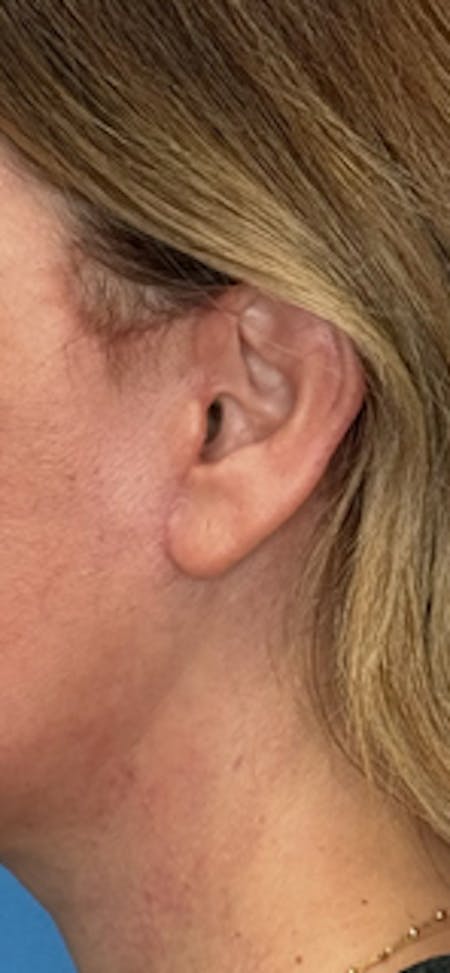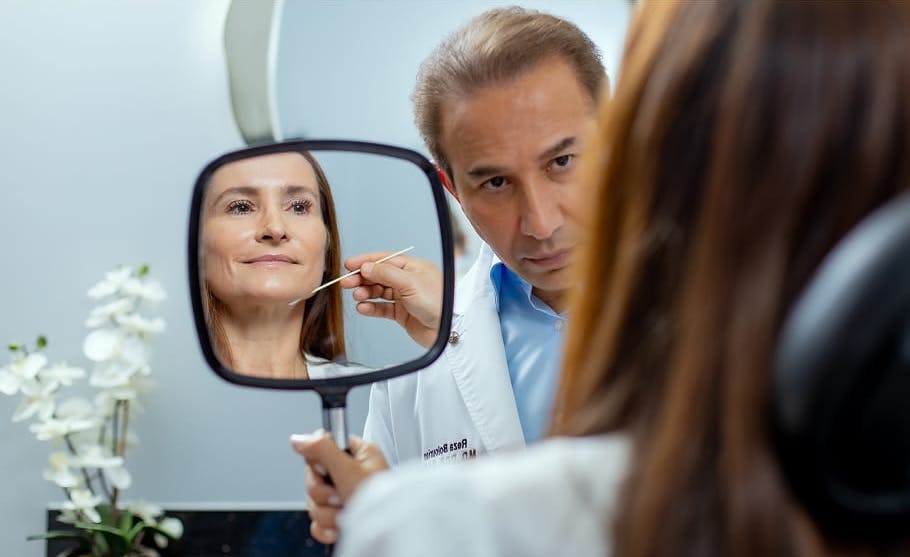
ContourLift, our signature deep plane facelift involves making incisions to lift and tighten the underlying tissues with minimal tension on the skin. The incisions are strategically placed to be as discreet as possible and to ensure optimal healing. Furthermore, it is the deep plane technique and the entire deep plane facelift vectors and design that would help create scars that are impeccable. Some people talk about endoscopic assisted deep plane facelift to avoid pre auricular scarring. The only difference in open VS endoscopic facelift is the lack of pre-auricular incision in the endoscopic approach. I would argue that the 1-1.5 inch incision in front of the ear heals with no to minimal scarring if the entire facelift is designed and executed correctly.
Typical Incision Locations for the deep plane facelift (ContourLift):
- Preauricular Incision: This incision is made in the natural crease in front of the ear, extending into the hairline above the ear. It’s usually well-hidden and helps in lifting the skin around the cheek area.
- Postauricular Incision: This incision is made behind the ear, and at times extending into the hairline at the back of the head. The hairline incision should not exceed 1-1.5 inches in length. It helps with correcting the posterior jawline to give it that extra snatch.
- Submental Incision: An incision is made under the chin to address sagging in the neck area. This is an important approach to address the aged underlying neck structures. Through this approach, the fat, muscles and salivary glands are contoured and tightened as needed to create a smooth and youthful neck.
- Temporal Incision: An additional incision is made at the temples to enhance the results in the upper face. This incision is about 3/4 inch long and well hidden in the hair. This approach does not necessarily lift up the eyebrow, but it will help contour the mid and upper face as the deep plane facelift approach may create bunching of the skin in the upper part of the face. This incision will eliminate the bunching with a deep plane vertical facelift approach.




Healing Process:
- Initial Healing (First Few Days): The immediate post-operative period involves swelling, bruising, and mild discomfort. The incisions look slightly red or inflamed. You see suture marks and patients may experience numbness around the incisions or corners of the face. Applying antibiotic ointment to the incisions is very critical at this time.
- Early Recovery (First Few Weeks): Swelling and bruising start to subside, though some residual swelling can last longer. Stitches are typically removed after 5-7 days. The incisions may look more intensely red since the skin edges will go through an inflammatory response due to collagen remodeling. At this stage you will continue applying triple antibiotic ointments.
- Intermediate Healing (One to Three Months): As the initial swelling fades, the skin begins to settle into its new position. The incisions continue to heal, and their redness gradually diminishes. Most people return to work and normal activities within two weeks, but full recovery might take longer.
- Long-Term Healing (Three to Six Months and Beyond): Scarring becomes less noticeable as it matures. The final results of the facelift become more apparent as the skin continues to tighten and adjust. The scars typically become well-hidden in natural creases and hairlines over time.
Tips for Optimal Healing:
- Follow post-operative care instructions provided by Dr. Bolourian’s team, including wound care and medication guidelines.
- Avoid smoking and excessive sun exposure, as these can impair healing and increase scarring.
- Maintain a healthy diet and hydration to support your body’s healing process.
- We will instruct you to apply scar cream to your incisions to help facilitate healing.
- Attend follow-up appointments to ensure proper healing and address any concerns.
Every individual’s healing process can vary, so it’s essential to keep in close contact with Dr. Bolourian’s team and follow their specific advice tailored to your situation.


